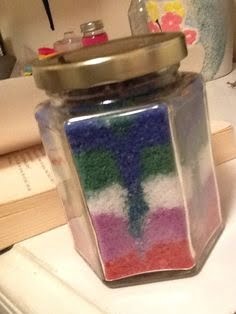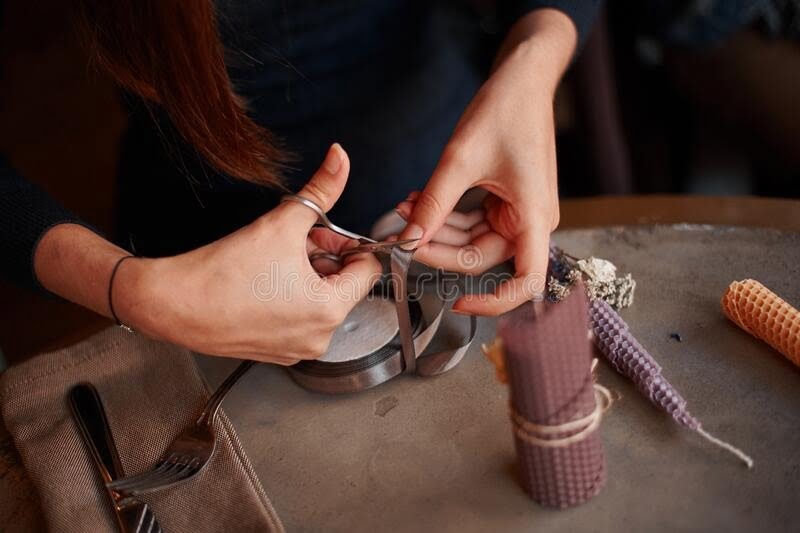Introduction
Candle making raw materials are essential components that must be used to create candles. Candles have been used since ancient times, with different colors, sizes, shapes, and scents. They can be made from a variety of materials such as waxes, oils, and wicks. The quality of the finished product depends largely on the quality of the raw materials and their correct combination in the manufacturing process. Knowing what types of candle making raw materials are available and how to use them is essential for anyone interested in candle making.
The most popular types of waxes used for candle-making include paraffin wax, soy wax, beeswax, palm wax and others. Paraffin wax is the most commonly used type because it is relatively easy to work with, inexpensive, and produces a smooth finished product. Soy wax has also grown in popularity because it burns cleaner than paraffin wax and releases fragrances more slowly over longer periods of time. Beeswax has become increasingly popular recently due to its environmental benefits; however, it can be more costly than other types of waxes. Palm wax is notable for having a strong scent when burned but also produces an opaque color when melted down during production.
Another important element for creating candles is oils or fragrances which help enhance the aroma of a candle once it has been lit or simply allow you to customize your own scent blend from natural ingredients. Fragrance oils come in all sorts of varieties such as floral notes, fruity scents or even flavors like cotton candy or chocolate truffles! Additionally certain essential oils can be used which come from completely natural sources like lavender or citrus fruits etc.. Some candles may integrate multiple fragrance oils together for unique combinations that will not just smell good but reflect sentimental memories as well!
The final key component needed for producing high-quality candles are wicks which provide direction to your melting process during production so that your candles produce cleanly & evenly when heated.. Fibers such as cotton & wood can both produce functional wicks given they have been designed carefully bearing in mind the thickness & shape desired by the end user – attention must be paid to these factors before embarking on any ambitious DIY projects! Additionally metal based core fiber wicks have become increasingly popular recently within larger/heavier container candles & provides support throughout the entire burning cycle so as not to cause any smokiness during extinquishment.. Similarly paper fibers often provide wonderful aesthetic artsy elements without compromising too heavily on performance not whilst providing additional control over burn times (disposable tea lights may employ this option heavily). Candle colour dyes can also be integrated into any formulas produced if you desire to achieve a certain hue or vibrancy: these arrive in various forms including liquid or solid powder depending on preference & budget available – please note traditional white candles actually refer partly rely upon titanium dioxide (nature’s whitest pigment!) Please make sure that sufficient tests are carried out prior to larger scale production runs in order ascertain promising results hve occurred beforehand!
Types of Candle Making Raw Materials
Candle making is a fun and rewarding activity that requires various types of supplies. Depending on the type of candle being made, the materials needed may vary significantly. Some of the raw materials used in candle making are wax, wicks, molds, colors, fragrances, dyes, and more.
When planning to make candles, the first step is to determine what supplies are needed. Knowing what raw materials are available for purchase can also help narrow down the choices that need to be made. This article provides an overview of some of the most common types of candle making raw materials available along with their pricing information.
The most essential ingredient in all candles are waxes”most often either paraffin or beeswax. Paraffin wax typically costs around $18 per pound while beeswax averages out at around $20-25 per pound depending on quality and grade. Additionally, soy wax varieties average between $20-$25 per pound as well. All these varieties come in a variety of different colors and textures to suit any desired aesthetic needs.
In order to make a candle wick is also necessary; commonly cotton or hemp core thread or paper core thread in 100 yard spools cost approximately $7-$10 each depending on thickness/denier used. Molds can also range widely in price depending on what style mold is being used and how intricate it is; standard molds could range anywhere from $10-$50 each while flexible silicone molds may cost slightly more due to increased longevity. To add color to candles there are many dyes available with pigment pastes starting at about $15 for 4 ounces, liquid colorants from around $6-8 for 4 ounces, blocks starting at around $12-15 for 16 ounces (to avoid separation when mixing), and even powder dyes for about $4-5 for two ounces respectively.
In addition to colors there’s also added fragrances which come in various forms such as natural essential oils ($15-40+ per ounce depending on oil complexity) or candle scents which start at around 4 ounces totaling somewhere between$5-7 plus shipping (depending on brand). Those who like using additives like stearic acid should expect to pay roughly twenty cents ($0.20) per ounce along with other specialty items such as microwaveable add-ins costing usually under ten dollars ($10) per pound total for those looking towards creating votives with special swirls strictly through microwaves jobs alone. Ultimately whatever type of project one plans on making will determine which types supplies must be purchased but hopefully this has provided an overview into some basic supply pricing across various categories within the field of candlemaking!
Trends in Candle Making Raw Materials Prices
Candle making is an increasingly popular craft and hobby. As the candle industry grows, so too do the prices of candle-making raw materials. In general, the key materials used to make candles–wax, wicks, fragrances, and containers–have been getting more expensive in recent years. This trend has been noticed among both amateur and professional crafters alike.
It is important for candle makers to stay up-to-date with raw material prices so that they can determine what ingredients offer the best value relative to price. Common raw materials used in candle making include a variety of waxes such as paraffin wax, soy wax, gel wax and beeswax; wicks made from different materials such as cotton, paper or wood pulp; coloring agents like dye chips or glitter; and scented oils or other natural fragrances. Every ingredient has its own unique cost implications that must be taken into account before choosing an ideal mix of raw materials to use in a given product.
An easy way to keep track of all current trends in candle making raw materials prices is by subscribing to price monitors such as Cost Minimizer’s Candle Making Raw Materials Price List which is available through the app store on most smart devices. This allows users to monitor fluctuations in the cost of common candle making ingredients over time and adjust their business model accordingly. With access to this information they can always be sure they are getting the best value for their money without having to do exhaustive research into each individual ingredient every time they plan a purchase order for their supplies. Additionally many online retailers of candle making supplies now list detailed pricing information for different types of products allowing customers an easier comparison shopping experience when searching out deals on supplies for their projects.
Where to Find Discounted Candle Making Raw Materials
A great way to save money on candle making supplies is to buy them in bulk. Many craft stores and wholesalers offer discounted rates when purchasing larger quantities. Price breaks may also apply if you purchase a variety of products at one time, rather than buying each item separately. Additionally, there are resources that sell specialty items and discontinued products at reduced prices. If you are looking for vintage or limited edition materials, these can often be found online or through other suppliers at discounted prices. Another option is to purchase raw materials from companies that specialize in candle making supplies”these companies can often provide candles for both professionals and hobbyists at discount rates due the wholesale pricing provided by their associated manufacturers. Finally, look for sales events held by retail stores where you can stock up on all the items you need without spending too much money.
Factors to Consider When Shopping for Candle Making Raw Materials
When shopping for candle making raw materials, it is important to be aware of how much each item costs. The price list above can help you ascertain the exact amount that each item will cost. It also helps to consider other factors that may affect the pricing of these items such as the store from which you are purchasing them. Additionally, make sure to take into account any additional costs associated with the purchase, such as packaging and shipping charges. Furthermore, consider the quality of the wax or scent used when making your candles before you make a purchase. Be sure to research different companies for their reviews and ratings so that you can get a better idea of which brands offer higher quality materials at affordable prices. Lastly, ensure that any materials purchased have longer shelf lives so that your candles will stay in optimal condition for longer periods of time.
Understanding Candle Making Raw Materials Sourcing
When it comes to making candles, having access to quality materials is essential. Knowing what type of raw material you will need, and how much of it, (and the associated costs) can help you make informed decisions when beginning or enhancing a candle business. A candle making raw materials price list can provide an overview of the supplies one needs for creating beautiful and unique candles.
To get a better understanding of candle-making raw materials from a sourcing perspective, it’s important to consider the following:
1. Quality ” Choose raw materials that are consistent and high quality in order to create good looking candles with a consistent finish throughout the entire batch.
2. Cost ” High-quality supplies may come with an increased cost associated but could be worth the investment if multiple batches are being produced. Additionally, providers may have set prices per product – with bulk purchasing often being cheaper than buying items individually – so be sure to research provider pricing beforehand when ordering supplies.
3. Shipping/Delivery ” Depending on where one sources their raw materials, shipping and delivery fees may apply which should also be factored into total costs before committing to a purchase.
4. Timeframe ” Lead times vary across suppliers based on availability; if working with specific timelines in mind it’s important to factor this into decision-making before committing to vendor procurement agreements in order to meet project expectations on time.
Understanding Candle Making Raw Materials Labeling
When it comes to candle making raw materials, it is important to understand the labels and information associated with them. Labels on candle making raw materials will typically provide details such as the name of the ingredients, a description of the ingredient’s purpose, as well as its origin or source. It is important to note that some may contain colorants, fragrances or dyes and this should be clearly stated on the label. Some labels may indicate additional information such as the size and shape of a material or any other special properties that have been added. Additionally, there may be different grades of material available, so labels might list what grade is contained in each item. To ensure quality control, manufacturers regularly test their raw materials; therefore, labels often offer a test certificate for each product which includes details about testing results for color consistency, fragrance quality and purity levels. Finally, manufacturers also include safety-related information and warnings where necessary – including any hazardous material contained within the product and related safety procedures. Once purchasers understand these labeling guidelines they can properly select which materials are best suited for their project’s needs.
Calculating Candle Making Raw Materials Costs
When you are making candles, knowing the price of each raw material can help you with budgeting and ensuring that your candle products are profitable. Each wax, dye, scent, and wick type has a different cost assigned to them. The amount will vary depending on where you purchase it from and which manufacturer produced it. Some raw materials have a higher cost associated with them due to their specialty nature, meaning that some ingredients may be more expensive than others. Additionally, different types of containers, such as jars or tins for candles require specific sizes of wicks and waxes which can increase the overall cost. It is important to remember that all of these costs should be factored in when calculating the price of your finished product. Once you determine these costs, you should add any other miscellaneous fees plus actual labor hours spent creating your candles. Knowing how much each candle will cost to produce will help ensure that you are making a profit while creating your unique masterpieces.
Tips for Buying Candle Making Raw Materials in Bulk
When buying candle making raw materials in bulk it is important to research the different options you have before making a purchase. Check with your local stores to find out what type of prices they offer and compare them to other suppliers. It is also important to make sure that the supplier can provide a guarantee on the price and quality of their materials. You should be aware that there may be additional fees charged for shipping or delivery costs, so be sure to factor these into your budget when calculating the total cost of your materials. Additionally, make sure to view sample materials whenever possible so that you can get a better feel for the quality of what you are buying. Finally, always read all product descriptions and carefully inspect any products you receive prior to use as customer satisfaction is key when it comes to supplies.
FAQ
Q: What types of waxes can I use to make candles?
A: There are several different types of wax that can be used for candle making, including paraffin wax, beeswax, soy wax, and palm wax. Depending on the type of candle you are making, each type can provide varying levels of melt point and scent throw.
Q: What wicks should I use?
A: The size of wick you should use will depend on the container size you plan to make the candle in as well as the type of wax you’re using. Generally speaking, a larger-diameter wick will work best with soy or palm waxes and a smaller-diameter wick will work better with paraffin or beeswax. You can find more specific information regarding wick selection online or consult your local candle supplier for advice.
Q: What is the best way to dye my candles?
A: The most common method for dyeing candles is by mixing colorants with melted wax before pouring it into molds or containers. This process requires some experimentation to determine how much colorant should be used to achieve the desired result. Additionally, some dyes must be “hardened” by placing them in a hot oven after pouring before they will hold their shape. Check instructions from your particular brand of colorant for more detailed instructions on how best to dye your candles.
Conclusion
This candle making raw materials price list outlines the costs of all the necessary materials needed to produce high-quality candles. From wax, wicks, and fragrances to dyes and tools, this list provides an accurate overview of what to expect when making a candle. Knowing the cost of raw materials is essential in understanding how much room there is for profit within any candle-making business. It also serves as a helpful guide for selecting affordable ingredients that will still maintain a high quality product. It’s clear that utilizing this price list along with careful planning will help ensure successful and profitable outcomes for any candle-making venture.

Welcome to my candle making blog! In this blog, I will be sharing my tips and tricks for making candles. I will also be sharing some of my favorite recipes.





